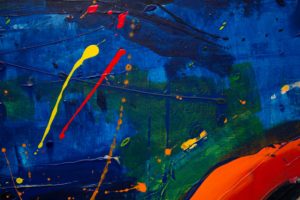
Creative Discomfort
Posted on April 27, 2019
“Fatigue, discomfort, discouragement are merely symptoms of effort.” ―
Increasing discontent despite a comfortable quality of life – what’s up with that? Why would you seek discomfort?
You may have food on the table, a roof over your head, a loving family and a good job. Yet you may still feel a sense of unease, distress, even depression. Logically, your unease cannot be reconciled. You take the same route to work, order your coffee the same way, and follow the established rules and procedures of your organization.
Lifelong Learning
In her book “Rebel Talent“, Francesco Giro talks about the need for novelty – both personally and professionally. Humans have succeeded against all odds as a result of our burgeoning cortex, our higher brain that allows us to think about what we think. How meta. As we enter the next few decades, those that can embrace ambiguity, tolerate change, and continue to learn, will outperform those who want to stand still.
One of my favourite quotes from Norman Doidge “We must be learning if we are to feel fully alive, and when life, or love, becomes too predictable and it seems like there is little left to learn, we become restless – a protest, perhaps, of the plastic brain when it can no longer perform its essential task”.
In other words, you might be uneasy and discontent because you have achieved what we always thought was the goal: comfort.
We need to keep learning to feel fully alive. Learning requires us to take chances, lean into uncertainty, and court failure.
You can practice uncertainty anywhere, anytime. Creative expression is quickly becoming the top skill in the workplace, and everyone is creative. In our connected world, it is easy to lose our creative edge. Divergent thinking requires space, nothingness, room to breathe. When was the last time you gazed at your navel without scrolling through Instagram at the same time? The Default Mode Network in our brain is most alive when we are thinking about nothing. Areas of the brain that otherwise never get to hang out have a neuron party – like a high school kegger when parents are out of town. But without the alcohol induced brain damage.
6 tips to adding creativity to your day

- Turn off everything. Do nothing, think about nothing and be curious about where your mind goes. Let it go, but watch it from afar.
- Turn off your Monkeys. Creativity works best without interference from our strict and bossy frontal cortex party pooper. Let it go. Find a safe space or safe group and embrace the eccentric.
- Creativity exercises – Random Word Association tests, doodling, singing, etc.
- Darken a room and brainstorm ideas with a friend, or play improv games like One word at a time.
- Discover your creative time – according to Leonard Mlodinow this is usually at the opposite time to your “getting things done” best productivity time. If you plow through to-do lists in the morning, try evening for your creativity time. Or check out Daniel Pink‘s chronotype evaluation suggestion in his book “When“.
- Write drunk, edit sober (Hemingway). Well, you don’t have to get drunk, but get happy! Do something you enjoy. Divergent (a-ha!) thinking is most active when you are relaxed and happy. (conversely, studies have shown that convergent thinking is best in a somber, low energy state. This type of creativity is used when editing a poem to find the “best” word, finishing details on a painting, etc).
Stop making excuses
“You can’t use up creativity – The more you use, the more you have” — Maya Angelou
You don’t have to be Picasso or DaVinci to benefit from everyday innovations to make your life better. Don’t think you are creative? Well, that’s just what your pesky frontal cortex wants you to believe because it doesn’t like ambiguity, and creativity is always ambiguous. Embrace your shades of grey and have fun.
Need some prompts?
If your neuron partying skills are a bit rusty, try the Wreck This Journal or The Line books from Keri Smith.
And when you get in the habit of managing uncertainty and ambiguity with grace, through creativity? Resilience. Take a stand against a “flat” life, with a side benefit of being prepared for the changing workforce where by 2030, 85% of the jobs have not even been invented yet. In the next few decades, lifelong learners and flexible adaptation will prevail.
Creativity might be the secret ingredient for you live a more fulfilled — but not necessarily comfortable— life.
